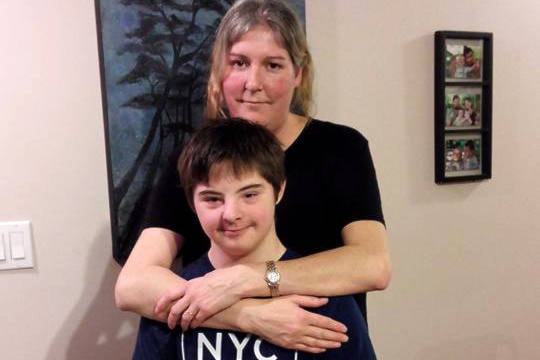Brandi Stovman feels there is no space for her son in the current education system and after an incident in September she has enrolled him in home schooling.
“This district has set him up to fail over and over and over again, to the point where they have no instructional control over him,” she said.
On Sept. 19 Stovman claims she got a message from the principal at the school her now 16 year old son Braedyn, who has Down syndrome, was attending at the time.
Braedyn had bolted, they needed her to come pick him up.
It isn’t the first time Braedyn had been difficult in school, but when he was younger, they could grab him but after an incident in Grade 5 he has become more violent and difficult to control.
“Because Braedyn is a risk, it’s easier to send him home and this is the pattern,” Stovman said.
According to Superintendent Tom Longridge, who cannot comment on individual cases due to privacy regulations but can talk about policy and programming in general, children with different educational needs are accommodated in School District 72.
The student’s needs will be assessed with the help of a school based team of administrators, psychologists, speech and language pathologists and other experts as required.
“Once those needs are identified they try to look at that students program within the school and try to identify how that can be supported and that is done through a plan called Individual Education Plan,” Longridge said.
If there are behaviour concerns, a safety plan is also developed which looks at triggers for behaviour that educators need to be aware of as well as plans on how to navigate and handle incidents.
“We put more resources into those situations than we get funded for individually because we try to support wherever those needs are,” Longridge said.
But for Stovman, it isn’t enough. She’s not trying to start a war, only give her son a good life.
“I’m not sure what to do, do I fight to put him back in the very walls that are destroying him and have segregated him and have taken the fun out of everything? Or do I turn and fight the government and say ‘no more, he is a person, he has a legal right to exist, to be accepted,’” she said.
On that day in September when Stovman arrived at school she found Braedyn, the sole student in a classroom, watching cartoons.
It was the last straw.
“It’s just one closed door after another,” she said. “They have taken everything away from Brayden, they have taken him out of all the extracurricular programs.”
Longridge said that the trouble often comes when the expectations of the parents and the reality of what the school can offer differ, because there are limits.
For example, Stovman said that Braedyn was only in school for two hours a day when she pulled him out.
“It’s already affecting (him),” she said. “He is asking for school, but he’s not asking for the things that most kids do… he’s asking for the social side.”
What frustrates Stovman is that in the uproar over wages and cost of living and cost of services like educational aids and care workers, the children are being forgotten.
“I’m not looking to make enemies… I don’t want that, I want peace, I want serenity just like the next person,” she said.
